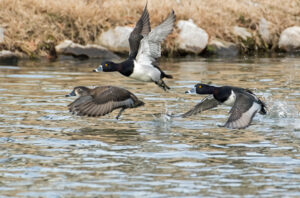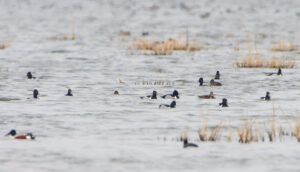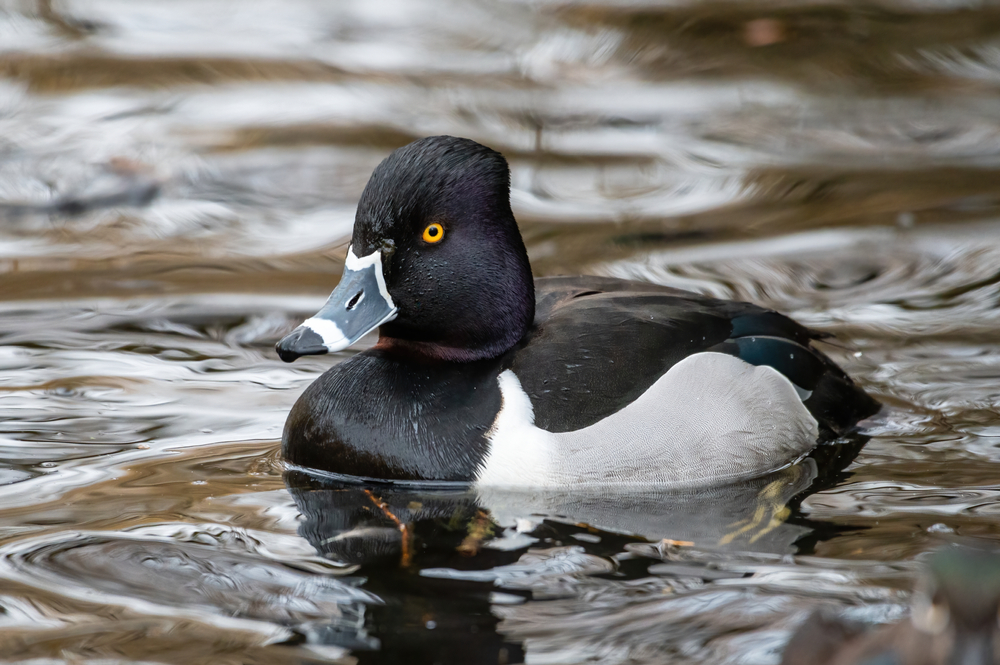Ring-necked Duck, Aythya collaris
Bill Rowe
Ducks, ducks, ducks… We are firmly in the middle of duck migration at this point, as it begins very early, in February, with many species reaching their peak during March. These include the diving ducks in the genus Aythya, which form a distinctive group with similar coloration in males: black chest, black rear end, and pale in between, with a dark head that is either rusty-red, in the case of the Canvasback and Redhead, or black, in the case of the two scaup species and their handsome cousin the Ring-necked Duck. This compact little duck is easy to identify and easy to find, as it frequents any size body of water, from a small wooded pond to a large marsh, bay, or lake, sometimes by the hundreds or even thousands. It is less wedded to deep water than its relatives; it tends to make shallower dives and to eat plant matter and small animals like worms, snails, and insects rather than fish. Its breeding range encompasses much of the boreal forest portions of Canada and the northernmost U.S., where it nests in bogs, marshes, and shallow lakes, rather than in the wide-open prairie-pothole region that supports so many other duck species. It is strictly a North American nesting bird but also a regular vagrant to Europe, where countries like the U.K. record many wandering Ring-necked Ducks every year. And the reverse is true: the most similar European species, called the Tufted Duck, has shown up with some regularity in the U.S., although mostly on the coasts and much more rarely in the Midwest. It has been documented in Illinois but never in Missouri.
IDENTIFICATION: Male Ring-necked Ducks are easy to separate from other ducks by their black head and chest along with a black back, pale gray sides, and a white “comma” pointing up at the shoulder. This pattern is visible at long distance. In addition, they have a strongly peaked head and a white band around the bill. The neck “ring” is dark maroon, hardly contrasting at all with the black neck and basically invisible most of the time—but look carefully at the banner photo above. (Ring-necked Duck was first described for science in 1809, and it may have been a specimen in the hand that gave the describer the “ring-necked” idea.) Females are brown, but they have the same shape and boldly ringed bill as males do, plus a fuzzy whitish patch at the base of the bill and a white eyering with a slight “tail” in back like a comet. The flight pattern, less striking than that of many ducks, consists of a long gray stripe along the rear wing.
ST. LOUIS STATUS: A common migrant almost anywhere there is water, and a locally common winter resident at places like Riverlands and the Two Rivers National Wildlife Refuge, as long as there is enough unfrozen water.
Learn more and listen to the calls of Ring-necked Ducks here.


Female: Note features mentioned
under Identification
Note wing pattern

Males stand out even at a distance.
Photo Credit: Al Smith




